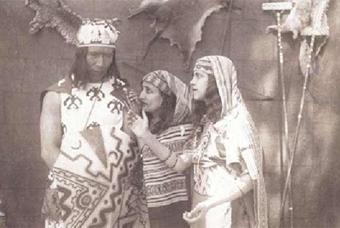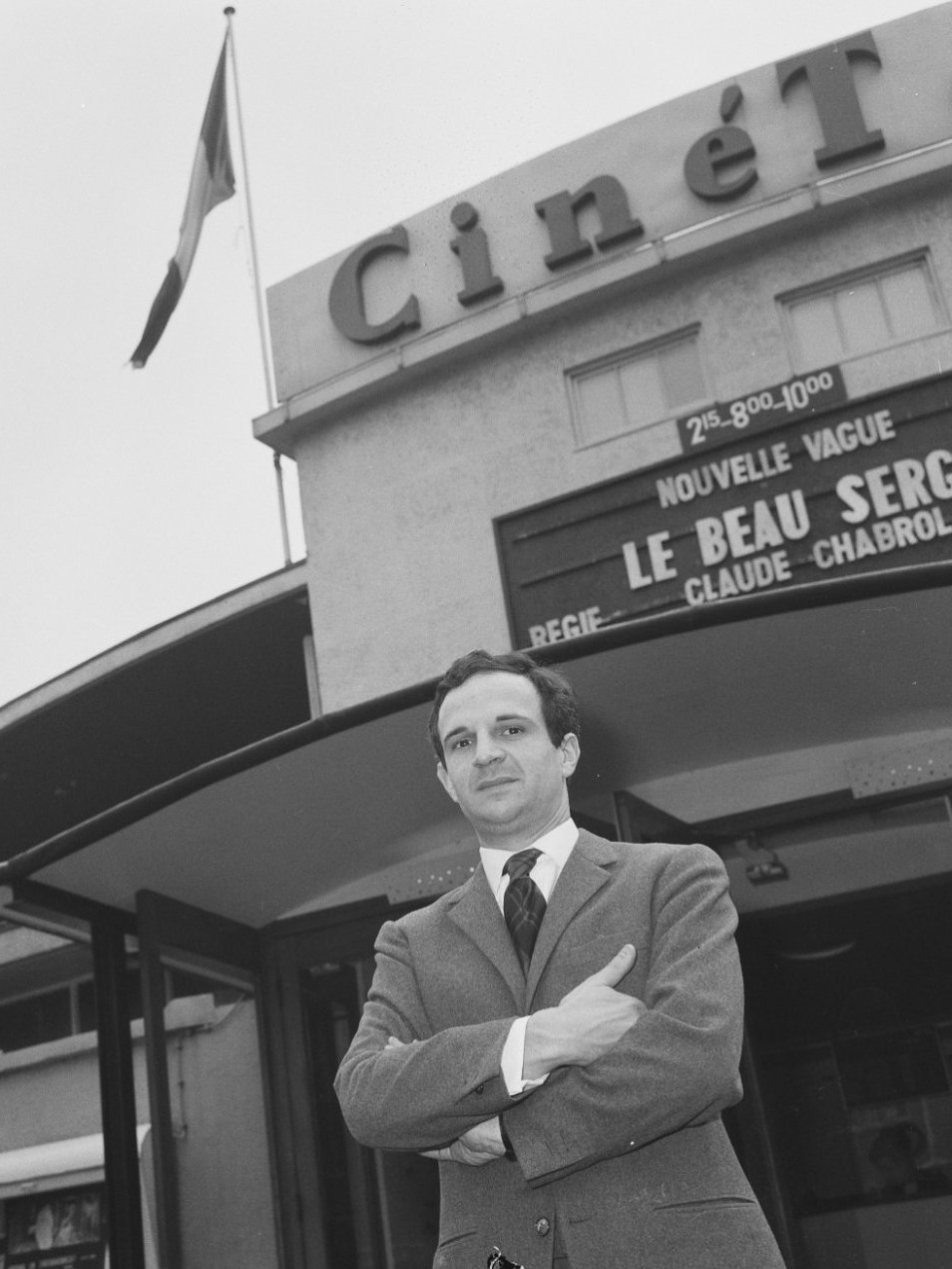|
Cinema Of Bolivia
The Cinema of Bolivia comprises the film and videos made within the nation of Bolivia or by Bolivian filmmakers abroad. Though the country's film infrastructure is too small to be considered a film industry, Bolivia has a rich film history. Bolivia has consistently produced feature-length films since the 1920s, many of which are documentary or take a documentary approach to their subject. Film historian José Sánchez-H has observed that the predominant theme of many Bolivian films is the country's indigenous cultures and political oppression. History The first motion picture was shown in Bolivia on June 21, 1897, probably on a Vitascope. The press paid more attention to "illicit acts" committed in the dark theater than to the pictures themselves, and authorities made it difficult to hold screenings, some of which were held in people's homes. The Biograph was introduced in 1899, and by 1905 popular exhibitions were held in La Paz. A wave of documentary films emerged in the 1910s ... [...More Info...] [...Related Items...] OR: [Wikipedia] [Google] [Baidu] |
Bolivian Boliviano
The boliviano (; sign: BsBanco Central de Bolivia. "Galeria de monedas y billetes''." Accessed 26 February 2011.Banco Central de BoliviaOfficial websiteAccessed 26 February 2011. ISO 4217 code: BOB) is the currency of Bolivia. It is divided into 100 cents or centavos in Spanish. Boliviano was also the name of the currency of Bolivia between 1864 and 1963. From April 2018, the manager of the Central Bank of Bolivia, Pablo Ramos, announced the introduction of the new family of banknotes of the Plurinational State of Bolivia, started with the 10 Bs note, and then gradually arrived to introduce the 200 Bs note, presented in April 2019. The new family of banknotes of the Plurinational State received several awards such as "the best banknotes in Latin America", was highlighted by its security measures, its aesthetics and its inclusion of prominent figures in Bolivian history, being among those who awarded the "Latin American High Security Printing Press Conference". History Currenci ... [...More Info...] [...Related Items...] OR: [Wikipedia] [Google] [Baidu] |
Latin American Cinema
Latin American cinema refers collectively to the film output and film industry, film industries of Latin America. Latin American film is both rich and diverse, but the main centers of production have been Argentina, Brazil and Mexico. Latin American cinema flourished after the introduction of sound, which added a linguistic barrier to the export of Hollywood film south of the border. History The origins of early filmmaking is generally associated with Salvador Toscano Barragán. In 1898 Toscano made Mexico's second film with a plot, titled ''Don Juan Tenorio''. During the Mexican Revolution, Toscano recorded several clips of the battles, which would become a full-length documentary in 1950, assembled by his daughter. Other short films were either created or influenced from French film-makers. Cinema of Mexico, Mexican movies from the Golden age of the cinema of Mexico, Golden Era in the 1940s and 1950s are significant examples of Latin American cinema. Mexican movies were exported ... [...More Info...] [...Related Items...] OR: [Wikipedia] [Google] [Baidu] |
Hacia La Gloria
Prepositions in the Spanish language, like those in other languages, are a set of connecting words (such as ''con'', ''de'' or ''para'') that serve to indicate a relationship between a content word (noun, verb, or adjective) and a following noun phrase (or noun, or pronoun), which is known as the object of the preposition. The relationship is typically spatial or temporal, but prepositions express other relationships as well. As implied by the name, Spanish "prepositions" (like those of English) are positioned ''before'' their objects. Spanish does not place these function words ''after'' their objects, which would be postpositions. Spanish prepositions can be classified as either "simple", consisting of a single word, or "compound", consisting of two or three words. The prepositions of Spanish form a closed class and so they are a limited set to which new items are rarely added. Many Spanish school pupils memorize the following list: ''a, ante, bajo, cabe, con, contra, de ... [...More Info...] [...Related Items...] OR: [Wikipedia] [Google] [Baidu] |
La Gloria De La Raza
LA most frequently refers to Los Angeles, the second largest city in the United States. La, LA, or L.A. may also refer to: Arts and entertainment Music * La (musical note), or A, the sixth note * "L.A.", a song by Elliott Smith on ''Figure 8'' (album) * ''L.A.'' (EP), by Teddy Thompson * ''L.A. (Light Album)'', a Beach Boys album * "L.A." (Neil Young song), 1973 * The La's, an English rock band * L.A. Reid, a prominent music producer * Yung L.A., a rapper * Lady A, an American country music trio * "L.A." (Amy Macdonald song), 2007 * "La", a song by Australian-Israeli singer-songwriter Old Man River Other media * l(a, a poem by E. E. Cummings * La (Tarzan), fictional queen of the lost city of Opar (Tarzan) * ''Lá'', later known as Lá Nua, an Irish language newspaper * La7, an Italian television channel * LucasArts, an American video game developer and publisher * Liber Annuus, academic journal Business, organizations, and government agencies * L.A. Screenings, a ... [...More Info...] [...Related Items...] OR: [Wikipedia] [Google] [Baidu] |
El Centenario De Bolivia
EL, El or el may refer to: Religion * El (deity), a Semitic word for "God" People * EL (rapper) (born 1983), stage name of Elorm Adablah, a Ghanaian rapper and sound engineer * El DeBarge, music artist * El Franco Lee (1949–2016), American politician * Ephrat Livni (born 1972), American street artist Arts, entertainment, and media Fictional entities * El, a character from the manga series ''Shugo Chara!'' by Peach-Pit * El, short for Eleven, a fictional character in the TV series ''Stranger Things'' * El, family name of Kal-El (Superman) and his father Jor-El in ''Superman'' *E.L. Faldt, character in the road comedy film ''Road Trip'' Literature * ''Él'', 1926 autobiographical novel by Mercedes Pinto * ''Él'' (visual novel), a 2000 Japanese adult visual novel Music * Él Records, an independent record label from the UK founded by Mike Alway * ''Él'' (Lucero album), a 1982 album by Lucero * "Él", Spanish song by Rubén Blades from ''Caminando'' (album) * "Él" (L ... [...More Info...] [...Related Items...] OR: [Wikipedia] [Google] [Baidu] |
La Profecía Del Lago
''The Prophecy of the Lake'' (''La profecía del lago'') is an unreleased and lost Bolivian silent feature film, directed by José María Velasco Maidana and completed in 1925. It was Velasco Maidana's first film, and would have been the second ever Bolivian-made fiction feature released, just after Pedro Sambarino's '' Corazón Aymara'' (1925). Set in contemporary Bolivia, it was a love story between an Aymara man and the daughter of a white landowner. Scheduled for release on July 28, it was censored and cancelled by the authorities, due to its "social critique" (highlighting the condition of indigenous Bolivians) and the controversial idea of a white woman falling in love with an indigenous man. The government ordered Velasco Maidana to surrender the film to be burned; in a 1979 interview, the director and his wife recalled that he threatened to burn himself along with his work. He managed to hide it in the walls of his house. Velasco Maidana subsequently directed ''Wara War ... [...More Info...] [...Related Items...] OR: [Wikipedia] [Google] [Baidu] |
Corazón Aymara
''Corazón Aymara'' (''Aymara Heart'') is a 1925 lost Bolivian silent feature film, directed by Pedro Sambarino. Production background This film is generally described as Bolivia's first ever fiction feature film. It portrays an Aymara woman struggling against accusations that she is unfaithful to her husband. Jeff Himpele, in ''Circuits of Culture: Media, Politics, and Indigenous Identity in the Andes'', places ''Corazón Aymara'' in the context of the Bolivian state's "indigenist project" of the 1920s and 1930s. ''Corazón Aymara'', like José Maria Velasco Maidana's ''Wara Wara'' (1930), served as a "visual register of the modernization of the nation state" - thus, according to José Antonio Lucero of the University of Washington, "narrating a future of synthetic mestizo nation building". Lucero also notes that indigenous characters in the cinema of the time were orientalised and played by non-indigenous actors and actresses. By contrast, historian Carlos Mesa, who founded ... [...More Info...] [...Related Items...] OR: [Wikipedia] [Google] [Baidu] |
Alejandro Pereyra
Alejandro Pereyra Doria Medina (born 24 February 1981) is a Bolivian poet and filmmaker. He was born in Sucre, Bolivia, lived in Mexico, Brazil and Germany for many years, and now lives in Bolivia. His 2009 feature film Verse was selected for the 2010 Zero Latitude Film Festival Ecuador and the 2011 Festival Del Cinema Latino Americano Trieste. Filmography * 2009 ''Verse Verse may refer to: Poetry * Verse, an occasional synonym for poetry * Verse, a metrical structure, a stanza * Blank verse, a type of poetry having regular meter but no rhyme * Free verse, a type of poetry written without the use of strict me ...'' * 2011 ''Mirar'' See also * Cinema of Bolivia References External links * 1981 births Spanish-language film directors Living people Bolivian film directors Bolivian screenwriters Male screenwriters {{Bolivia-media-stub ... [...More Info...] [...Related Items...] OR: [Wikipedia] [Google] [Baidu] |
Auteur Cinema
An auteur (; , 'author') is an artist with a distinctive approach, usually a film director whose filmmaking control is so unbounded but personal that the director is likened to the "author" of the film, which thus manifests the director's unique style or thematic focus. As an unnamed value, auteurism originated in French film criticism of the late 1940s, and derives from the critical approach of André Bazin and Alexandre Astruc, whereas American critic Andrew Sarris in 1962 called it auteur theory. Yet the concept first appeared in French in 1955 when director François Truffaut termed it ''policy of the authors'', and interpreted the films of some directors, like Alfred Hitchcock, as a body revealing recurring themes and preoccupations. American actor Jerry Lewis directed his own 1960 film ''The Bellboy'' via sweeping control, and was praised for "personal genius." By 1970, the New Hollywood era emerged with studios granting directors broad leeway. Pauline Kael argued, however, ... [...More Info...] [...Related Items...] OR: [Wikipedia] [Google] [Baidu] |
Socialist Realism
Socialist realism is a style of idealized realistic art that was developed in the Soviet Union and was the official style in that country between 1932 and 1988, as well as in other socialist countries after World War II. Socialist realism is characterized by the depiction of communist values, such as the emancipation of the proletariat. Despite its name, the figures in the style are very often highly idealized, especially in sculpture, where it often leans heavily on the conventions of classical sculpture. Although related, it should not be confused with social realism, a type of art that realistically depicts subjects of social concern, or other forms of "realism" in the visual arts. Socialist realism was made with an extremely literal and obvious meaning, usually showing an idealized USSR. Socialist realism was usually devoid of complex artistic meaning or interpretation. Socialist realism was the predominant form of approved art in the Soviet Union from its development in t ... [...More Info...] [...Related Items...] OR: [Wikipedia] [Google] [Baidu] |



